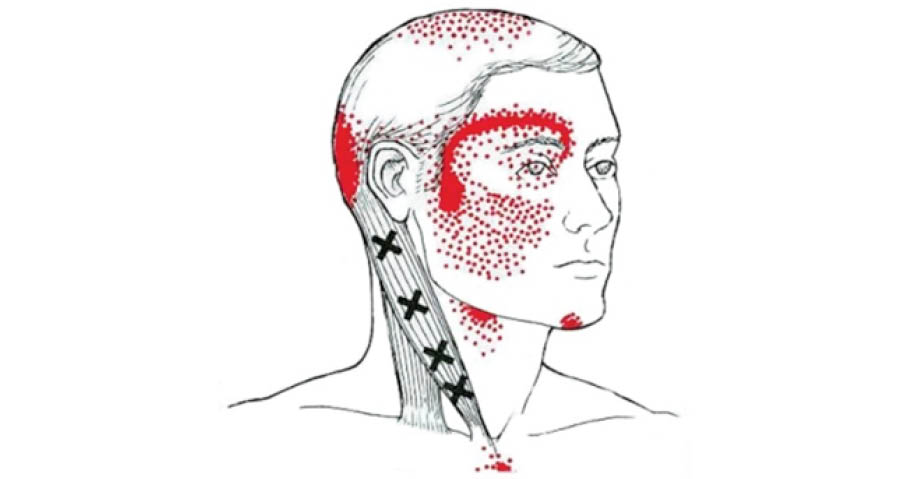Dr. Danesh D. Chinoy is a leading and award-winning Health and Wellness Coach, Sports Physiotherapist and Psychologist. His mission is to empower you to reach your highest levels of wellness/fitness. You can connect with him at: daneshchinoy@gmail.com .
Two of the most common complaints I receive from my patients, are that of back-ache and neck-pain. Of late, there’s also been a growing number of patients complaining of headaches, especially after the pandemic. You might wonder why a patient with a headache would consult a physiotherapist, when one could simply pop in a few pills and get done! Friends, there’s numerous reasons which cause headaches… certainly your better half cannot take all the credit for yours!
Have you ever experienced a headache-like pain that starts from the base of your skull, through the temple, and sometimes even behind the eye? This typical pattern of pain occurs with a condition called ‘cervicogenic headache’. It is defined as, “pain perceived as occurring in a part of the body other than its true source; it is perceived in the head from a source in the neck.” Therefore, a cervicogenic headache is a secondary headache, meaning it is caused by another illness or physical issue. Such headaches are quite literally a pain in the neck! These arise when the nerve tissue in the upper neck becomes irritated, often as the result of abnormal pressure or tightness in the area of the upper neck muscles, joints and ligaments.
Often, the cervical spine and its component bone, disc and/or soft tissue elements are responsible for the headache. This is because numerous pain-sensitive structures exist in the upper neck and back of head regions. This accounts for the shooting pain born out of any existing dysfunction in this region of the body. Many of us work in a sustained sitting position – perhaps at a desk, work from home on computer or simply too much of texting on the cell phone. Poor posture contributes to tension in these areas.
A less common cause of cervicogenic headaches can be attributed to any injury to this area, such as a whiplash or a blow to the head.
Fortunately, all of the above cases can be healed via physiotherapy. A physiotherapist will evaluate the smaller joints of the neck that have developed dysfunction and can assist by performing hands-on treatment which can involve mobilizing and stretching the joints and muscles of the neck, in order to get them to optimum performance again.
In conjunction with this, those suffering from cervicogenic headache typically lack strength in the muscles at the front of their neck. These muscles counter a forward head posture and help maintain a more neutral head and neck position. The Physiotherapist will teach you how to perform safe and appropriate exercises to build the required strength and flexibility back again.
A rolled towel may help you at home. While lying on your back, place a rolled towel under your neck. Now, tuck your chin. Keeping your neck in contact with the towel, lift your head only, and don’t let your chin poke forward – in other words maintain your tucked chin position. Now see how long you can comfortably hold this position.
If you find this task difficult to do and suffer from headaches, do consider an appointment with a physiotherapist. A complete assessment of your neck, and a combination of hands-on treatment in conjunction with exercises for mobility and strength will bring you relief from your headaches.
Work demands and activities at home can predispose you to developing poor habits and posture. The following tips will help you avoid injury, improve your posture and reduce your risk of developing cervicogenic headaches:
- When repetitively turning your head in each direction through the workday, try to incorporate full body rotation, rather than just neck rotation. Using a rotating office chair or stool can help.
- When sitting for prolonged periods of time at a desk, use a lumbar spine roll to align your spine in a more neutral posture. For more suggestions, please refer to my earlier article on Ergonomics in Parsi-Times.
- If you have to lift repetitively or lift heavy objects such as boxes, bend at your knees and squat to the floor versus bending at your back. Bending at your knees will help to keep your spine in a more neutral and safer position with improved posture.
- If you are required to lift objects at home or work, keep the object you are lifting close to your body as this will reduce strain on your spine.
- When sitting for prolonged periods at home, avoid soft couches or chairs that you sink into will encourage poor posture. Instead, sit on a firmer surface with a lumbar roll for better spinal alignment.
- When sleeping on your back or side, only use enough pillows (often one) to keep your neck neutral and not bent to either side. Sleeping with too many pillows can shift your head forward or to the side and place strain on the neck throughout the night.
- Avoid texting too much on the cell phone. If you must then hold the phone with one hand and use the index finger of the other hand to type the msg.
- Do not sleep on the stomach with the head turned to one side throughout the night.
- Do not read or watch television while sleeping.
Cervicogenic headaches are manageable if properly identified and addressed. Please consult your physiotherapist if you suspect you have a cervicogenic headache and would like more specific physical therapy intervention on your way to reduced or abolishing headaches!
- The Role Of Physiotherapy In Mental Health: A Holistic Approach - 28 September2024
- Reversing Fatty Liver: A Practical and Light-Hearted Guide - 24 August2024
- ‘Dilu’ Dhamaka: Maintaining Heart Health The Bawa Way! - 10 August2024
